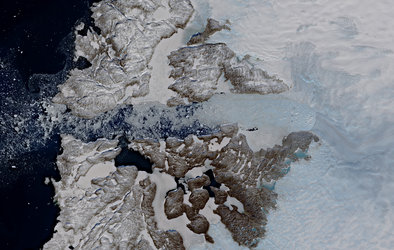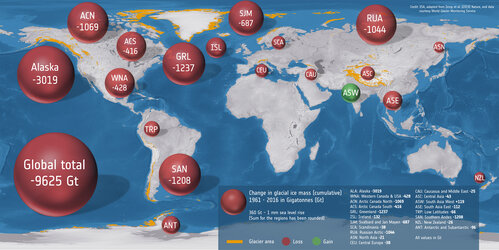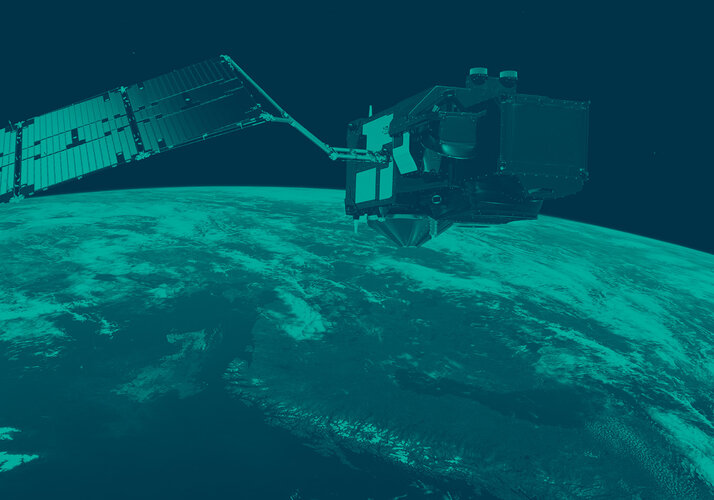Snow grain size – it matters
Most of us probably wouldn’t think of describing snow in terms of its grain size. However, grain size is fundamental to the amount of sunlight that snow reflects back into space – its albedo. With both snow and albedo part of the climate system, scientists are applying a novel analytical theory to Copernicus Sentinel-3 data and shedding new light on Greenland’s changing albedo.
The amount of sunlight absorbed or reflected by Earth’s surface drives our climate and weather.
About one-third of the sunlight that hits Earth is reflected back into space and the other two-thirds is absorbed by the land, oceans and atmosphere. This ratio is governed by the reflectivity, or albedo, of the surface that the sunlight hits.
Surfaces with lighter colours reflect more sunlight than darker surfaces. An everyday example of this is the difference we feel on a hot sunny day when wearing black clothes compared to wearing white. Earth is affected in the same way.
So hypothetically, if the planet were completely covered in ice, it would reflect over 80% of incident sunlight back into space. On the other hand, if it were covered by dark green forest, it would only reflect about 10%.
The albedo of Earth’s surface varies naturally according to the changing colours of the season, but long-term trends in changing snow and ice cover, as well as changing vegetation cover and air pollution, are having an impact on the overall balance of Earth’s albedo – and, hence, on how much heat it absorbs.

The Global Climate Observing System lists both albedo and snow as essential climate variables, which when measured and studied over time are used to understand, monitor and predict climate change.
Ice and snow are often cited as the first causalities of climate change, and are measured and monitored from space in a variety of ways. However, while ice and snow may be present, the melting process affects its albedo.
Snow grain size is a fundamental property of snow and is directly proportional to its surface area. Fresh dry snow tends to have a small grain size (under 0.5 mm in diameter), but as it melts the grain size grows and the larger grains reflect less sunlight.
Thanks to Alex Kokhanovsky from Vitrociset who, along with several authors, published an elegant analytical theory, scientists have a fast new way of retrieving snow grain size from satellite images.
Scientists from the Geological Survey of Denmark and Greenland (GEUS) in Copenhagen are coupling this theory with data from the Copernicus Sentinel-3 satellites’ Ocean Land and Colour Instruments – as the animation above shows.
Jason Box, from GEUS, explains, “One way of measuring the albedo of snow is to monitor how the surface colour changes because of pollution such as from wildfire soot. But this doesn’t give us the whole story. Remarkably, this exciting new theory allows us to retrieve snow grain size from satellite optical images.

“Through ESA’s Earth Observation Science for Society programme, we have been able to demonstrate this over Greenland. We have found that pulses of warm air cause dark blemishes far inland on the ice sheet, contributing to increased climate sensitivity.”
In fact, the Copernicus Sentinel-3 satellite constellation can now take the relay in maintaining the climate record on snow albedo, which was first provided by the Advanced Very High Resolution Radiometer instruments on the US NOAA and Europe’s MetOp satellites, and then the Moderate Resolution Imaging Spectroradiometer on the US Terra and Aqua satellites.
In the future, the method will be extended and applied to areas with more complex terrain than Greenland. Furthermore, grain size data is now on the horizon for being used operationally to improve weather, hydrological and hazards forecasts, in service to society.















 Germany
Germany
 Austria
Austria
 Belgium
Belgium
 Denmark
Denmark
 Spain
Spain
 Estonia
Estonia
 Finland
Finland
 France
France
 Greece
Greece
 Hungary
Hungary
 Ireland
Ireland
 Italy
Italy
 Luxembourg
Luxembourg
 Norway
Norway
 The Netherlands
The Netherlands
 Poland
Poland
 Portugal
Portugal
 Czechia
Czechia
 Romania
Romania
 United Kingdom
United Kingdom
 Slovenia
Slovenia
 Sweden
Sweden
 Switzerland
Switzerland








































